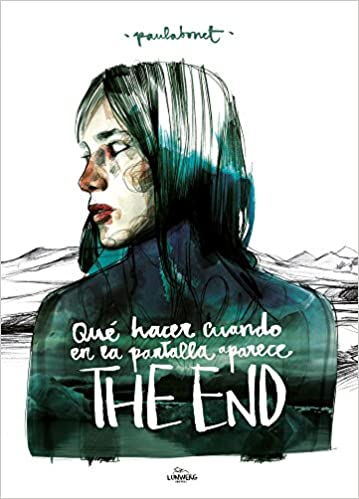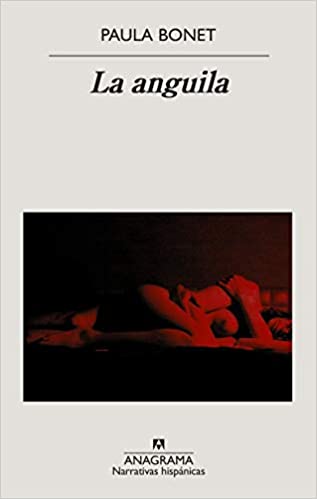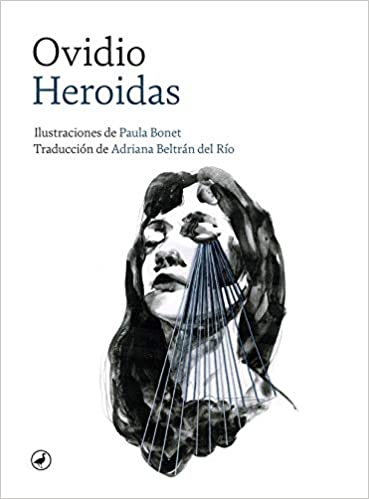It is not the first time that an eminently visual author comes to this blog. In case of Maria Hesse precedes that of the illustrator Paula Bonet. And so, between the two of us we address the particular universe of these visionary storytellers on the most sensory aspect of the matter. Because every writer would like to know how to capture his scenes in the same way that every illustrator would like to adorn his images with great stories. And they go and they just get it.
There are only sporadically cases in which everything conspires and the artistic creator is at his best. Is this what happens with these two writers? Illustrators?…, there is fun in confusion. The point is that the generational coincidence of María and Paula places us in the strange situation of the paired coincidences of virtue, like that of Cervantes and Shakespeare or Ronaldo and Messi if we go down to the realm of bread and circuses of our time.
But taking flight again after prosaic examples, Bonet's books are puzzling because one never knows what will be found on the next page, if the thread of the story will continue or if everything will be recomposed in a universe capable of synthesis or suggestion. to the hypnotism of the gaze that observes us from the paper. A whole exercise in existential illusionism as a creative compendium made into literature only from the format. But reaching much further for the final scope.
Top 3 recommended books by Paula Bonet
What to do when THE END appears on the screen
When the Truman show is about to end, one of the viewers who a few moments ago was experiencing the apotheosis of Truman's liberation, comments in a bored tone: What do they cast now? Yes, life is more ephemeral at this time. Paradoxically, we live longer than we did centuries ago, but we take less advantage of the moment. Because if there is no immediate ecstasy we only want to reach new emotional heights that are impossible to enjoy.
The end is a sign in the pretended infinity of our universe. We go there with the inertia of the lamb to the fold. Concession after concession, childhood is eventually forgotten and the truth is that that was the only ending that mattered.
A book about endings that arrive, without warning, that break us in two, that drag on for years and that never end because they confuse pride with memory. And then we take trains, we reserve hotel rooms in forgotten towns, we live hooked on screens waiting for someone to decide to speak to us to inform us of the next move, the one that will consciously bring us closer to an end that we have been searching for years. But that end does not come. And suddenly one day we wake up and feel emptiness: THE END appears on the screen and we decide to start another story. One where we never have to pretend we don't know each other.
Eel
The work of art is the body. In the anthropocentric vision of the world and the universe, from the Vitruvian man to Ecce Homo or Liberty leading the people, the image of the human body is the emblem to conquer for perfect canons or disturbing images. Blood, sweat, death and passion. Until we are dust, all we have left is the idea that we have a soul under our skin and that orgasm may be the only way to feel the touch of God.
This is a book about the body. About a body that loves and is loved. A body that is also abused, violated through sex and childbirth, abortion and blood, dirt. Non-artistic materials in the hands of a painter who writes, a writer who watches.
Eel it deals with memory and inheritance, talks about births and losses, about the desire that crosses generations, the learned and truncated gestures. On rebellions and escapes, on friendship and on Chile. It is the portrait of a woman who takes the risks of looking back without glaze and heads towards a new life.
Heroids
A book by Ovid made his own, by Paula Bonet. To love with the mystical touch that the poet gave him to finally succumb to the strange lyricism of some illustrations that seem to reveal all the secrets that the passionate words bury to transcend his emotions of those days converted in these images into the certain drives that are hidden behind .
Letters written from the deepest pain. Legendary protagonists, queens and nymphs of the mythological world will send us, in letter form, the pain caused by betrayal, abandonment and resentment. In one more example of the exaltation of femininity in the classical world, these heroines try to hide the true grief they feel at having been abandoned by the lovers and husbands who swore eternal love to them. But they do it through the rage and fury of their words. They are protagonists who become writers. It is the pain that speaks with a tragic speech full of passion.



